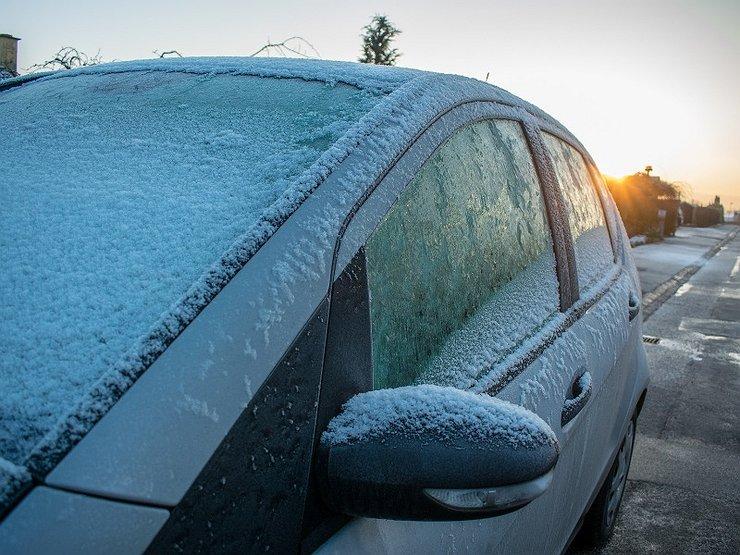
Diesel fuel does not like frost. What to remember?
 Winter, or rather those days when the temperature drops below zero, is a special period for diesel engines. The fact is that diesel does not like frost. It includes, among other things, paraffinic hydrocarbons (commonly referred to as paraffins) that change from a liquid state to a partially solid state under the influence of low temperatures. This, in turn, causes the fuel lines to clog quite easily and the engine stops running due to lack of fuel.
Winter, or rather those days when the temperature drops below zero, is a special period for diesel engines. The fact is that diesel does not like frost. It includes, among other things, paraffinic hydrocarbons (commonly referred to as paraffins) that change from a liquid state to a partially solid state under the influence of low temperatures. This, in turn, causes the fuel lines to clog quite easily and the engine stops running due to lack of fuel.
Suitable oil and depressant
Of course, this happens when the diesel fuel supplied to the engine is not properly prepared for frost. Those. in its chemical composition there are no measures that prevent the precipitation of the above-mentioned paraffin crystals, effectively blocking the patency of the fuel lines and the filter.
That is why the so-called oil, first transitional, and then winter oil. They are more than summer oils, resistant to cold due to their chemical composition and, depending on whether it is only winter oil or the so-called Arctic oil, allow a diesel engine to work smoothly even in 30-degree frosts.
Drivers who have been driving diesel cars for years know that in November, and certainly in December, they should fill up with diesel fuel that is appropriate for this season. Moreover, if you do not want to have problems with “freezing” pipes in winter, you need to proactively add a special agent to the tank that lowers the pour point of diesel fuel. We'll get it at every gas station in containers detailing the proportions in which it needs to be mixed with the oil. This specificity, called a depressor, can be added to a tank that already has a certain amount of fuel in it, or immediately after we fill it up. It is best to add an appropriate amount before refueling, as the fuel will then mix better with such a reagent.
See also: Winter fuel - what you need to know
Be wise from evil
It should, however, be immediately added that the depressant only prevents paraffin precipitation. If the oil "freezes", its effectiveness will be zero, since it does not dissolve the pieces that block the fuel system, although it prevents their formation. So, if we want to avoid unpleasant surprises with fuel freezing in the cold, let's stock up on this specificity in advance, and even if the temperatures are still positive, add it to the tank from time to time, just in case.
What should we do if, nevertheless, we neglect filling with the appropriate oil and the engine fails? And you need to know that this can happen even while driving. This situation will not change if you try to start the engine by cranking the engine until the battery runs out, or if you push the car, let alone try to tow it with another vehicle. Even if the engine runs for a short time, it will quickly stall again. Therefore, it is a pity for such actions time and effort.
To warm
The easiest way in such a situation is to put the car in a warm room with a positive temperature. The warmer the garage, hall, or other place where the car can thaw, the faster the paraffin crystals will dissolve and the fuel system will unlock. In any case, however, this may take up to several hours. In the past, drivers of, for example, trucks warmed up fuel lines with special burners with “live” fire, which was very dangerous in the first place (there was a risk of fire), and besides, it did not always work out to be effective. However, you can try to heat the system, for example with hot air. If we have a special blower or similar device, we will shorten the wax dissolution time. After the situation returns to normal, do not forget to add the appropriate oil to the tank or add antifreeze. Preferably both
See also: How to care for the battery?
It is categorically impractical, especially for new designs of turbodiesels, to use additives in the form of alcohol, denatured alcohol or gasoline, although their use was even recommended in the manuals in the past. The resulting damage and the cost of repairing the injection system will be incomparably higher than even the losses caused by a few hours of inoperability of the fuel system, but eliminated in a natural way.
What are the rules for this
According to Polish standards, the year at filling stations is divided into three periods: summer, transition and winter. In Polish climatic conditions, the summer period is the period from April 16 to September 30, when the temperature should not exceed 0 degrees C. The transition period from October 1 to November 15 and from March 1 to April 15 is considered a transition period. This type of (intermediate) fuel is frost-resistant down to about -10 degrees Celsius. Winter oil is usually delivered to gas stations after November 15 until the end of February. It must withstand a temperature of at least -20 degrees C. Of course, these dates may vary depending on weather conditions.
There are also arctic oils that can withstand temperatures of 30 degrees or more, and they also end up in our country. They can be found mainly in the northeastern regions, where winters are more severe than, for example, in the southwest.
Therefore, before winter, we will prophylactically stock up on at least these fuel additives and already now we are pouring them into the diesel fuel tank. Those who drive a lot in winter should also be interested in the condition of the fuel system in their car, especially the fuel filter.
By the way, there are also tips on the supply of oil at reputable gas stations, where not only its high quality, but also refueling with the specified fuel at the right time of the year.

